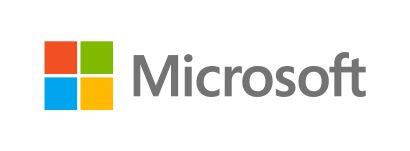Phi-4 AI model for STEM reasoning
This performance is attributed to its training methodology, which emphasizes data quality and incorporates synthetic data throughout the training process. Advancements in post-training techniques further enhance its capabilities, enabling Phi-4 to achieve high-quality results efficiently.
Phi-4 is part of Microsoft’s Phi family of small language models, focusing on achieving high-quality results despite its smaller size. It is available on platforms like Azure AI Foundry and Hugging Face, making it accessible for various applications that require advanced reasoning capabilities.
- Strengths:
- Excels in STEM-focused tasks, including advanced math and graduate-level Q&A.
- High performance in HumanEval coding benchmarks, surpassing many larger models.
- Competitive with state-of-the-art models like GPT-4o and Qwen-2.5 on reasoning tasks.
- Limitations:
- Struggles with strict instruction following, particularly for highly formatted outputs.
- Occasional factual hallucinations, especially when addressing less common factual queries.
- Can produce unnecessarily verbose answers for simple queries due to its focus on chain-of-thought reasoning.
Comparison
Benchmarks Where Phi-4 Outperforms Smaller Models:
Phi-4 consistently outperforms smaller models like Phi-3, Qwen 2.5 (14b instruct), and GPT 4o-mini on the following benchmarks:
- MMLU (84.8): Strong performance compared to Phi-3 (77.9) and Qwen 2.5 (79.9), demonstrating superior reasoning across a wide range of topics.
- GPQA (56.1): A significant lead over Phi-3 (31.2) and GPT 4o-mini (40.9), showing Phi-4’s dominance in STEM graduate-level questions.
- MATH (80.4): Exceptional performance compared to Phi-3 (44.6) and Qwen 2.5 (75.6), highlighting its capability in math competition-style reasoning.
- HumanEval (82.6): Surpasses smaller models like Phi-3 (67.8) and Qwen 2.5 (72.1), excelling in coding-related tasks.
- MGSM (80.6): Outperforms Phi-3 (53.5) and GPT 4o-mini (86.5), reinforcing its problem-solving strength in multi-step reasoning tasks.
- DROP (75.5): A strong lead over Phi-3 (68.3), demonstrating superior reading comprehension and reasoning under uncertainty.
Benchmarks Where Phi-4 Outperforms Larger Models:
Phi-4 also achieves competitive or superior performance against larger models like Llama-3.3 (70b instruct), Qwen 2.5 (72b instruct), and GPT 4o:
- GPQA (56.1): Outperforms larger models like Llama-3.3 (49.1) and Qwen 2.5 (49.0), showcasing its efficiency in STEM-focused reasoning relative to its size.
- MATH (80.4): Performs better than Llama-3.3 (66.3), highlighting its ability to handle complex math problems effectively.
- PhiBench (56.2): Demonstrates strong generalization compared to larger models like Llama-3.3 (57.1) and Qwen 2.5 (64.6) while maintaining computational efficiency.
- HumanEval+ (82.8): Exceeds Llama-3.3 (77.9), reflecting its strength in advanced coding tasks and evaluations.
Key Highlights:
- Phi-4’s ability to outperform both smaller and larger models in STEM benchmarks like GPQA and MATH reflects its specialized training with high-quality synthetic data and reasoning-focused datasets.
- Its efficiency in coding tasks (e.g., HumanEval, HumanEval+) demonstrates well-rounded capabilities, rivaling even much larger models.
- While it is smaller in size, Phi-4 leverages innovative data and training techniques to achieve performance on par with or better than its larger counterparts in reasoning-heavy benchmarks.
This showcases Phi-4 as a highly optimized model offering competitive performance while remaining cost-effective.
| Benchmark | Phi-4 14b | Phi-3 14b | Qwen 2.5 14b instruct | GPT 4o-mini | Llama-3.3 70b instruct | Qwen 2.5 72b instruct | GPT 4o |
|---|---|---|---|---|---|---|---|
| MMLU | 84.8 | 77.9 | 79.9 | 81.8 | 86.3 | 85.3 | 88.1 |
| GPQA | 56.1 | 31.2 | 42.9 | 40.9 | 49.1 | 49.0 | 50.6 |
| MATH | 80.4 | 44.6 | 75.6 | 73.0 | 66.3 | 80.0 | 74.6 |
| HumanEval | 82.6 | 67.8 | 72.1 | 86.2 | 78.9 | 80.4 | 90.6 |
| MGSM | 80.6 | 53.5 | 79.6 | 86.5 | 89.1 | 87.3 | 90.4 |
| SimpleQA | 3.0 | 7.6 | 5.4 | 9.9 | 20.9 | 10.2 | 39.4 |
| DROP | 75.5 | 68.3 | 85.5 | 79.3 | 90.2 | 76.7 | 80.9 |
| MMLUPro | 70.4 | 51.3 | 63.2 | 63.4 | 64.4 | 69.6 | 73.0 |
| HumanEval+ | 82.8 | 69.2 | 79.1 | 82.0 | 77.9 | 78.4 | 88.0 |
| ArenaHard | 75.4 | 45.8 | 70.2 | 76.2 | 65.5 | 78.4 | 75.6 |
| LiveBench | 47.6 | 28.1 | 46.6 | 48.1 | 57.6 | 55.3 | 57.6 |
| IFEval | 63.0 | 57.9 | 78.7 | 80.0 | 89.3 | 85.0 | 84.8 |
| PhiBench (internal) | 56.2 | 43.9 | 49.8 | 58.7 | 57.1 | 64.6 | 72.4 |
Team

Team Contributions:
- Core Development:
- The team designed and implemented the Phi-4 architecture, based on a decoder-only transformer with 14 billion parameters, and developed innovative post-training techniques like Direct Preference Optimization (DPO) and Pivotal Token Search (PTS).
- They enhanced the model’s reasoning and problem-solving capabilities by incorporating synthetic data throughout pretraining and midtraining phases.
- Data Engineering:
- Specialists curated high-quality organic data and developed pipelines to generate diverse and nuanced synthetic datasets to emphasize reasoning and problem-solving.
- Post-Training and Fine-Tuning:
- Efforts were focused on supervised fine-tuning, DPO, and mitigation of hallucination issues, ensuring the model adhered to safety standards and user preferences.
- Safety and Ethical Alignment:
- The model’s alignment with Microsoft’s Responsible AI principles was overseen by ethical AI experts, who performed extensive safety checks, red-teaming, and evaluations to reduce risks related to harmful or biased outputs.